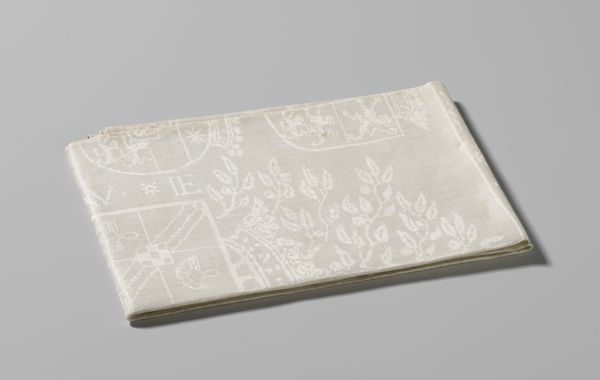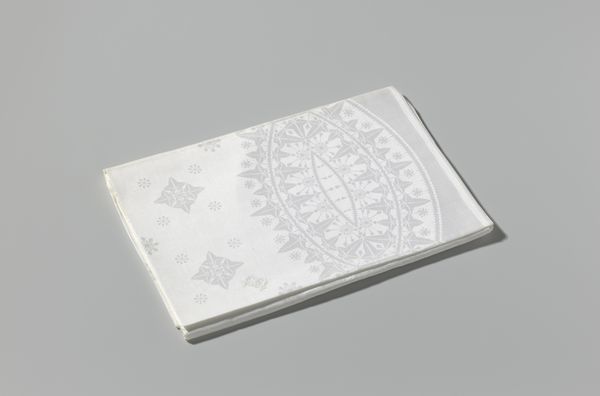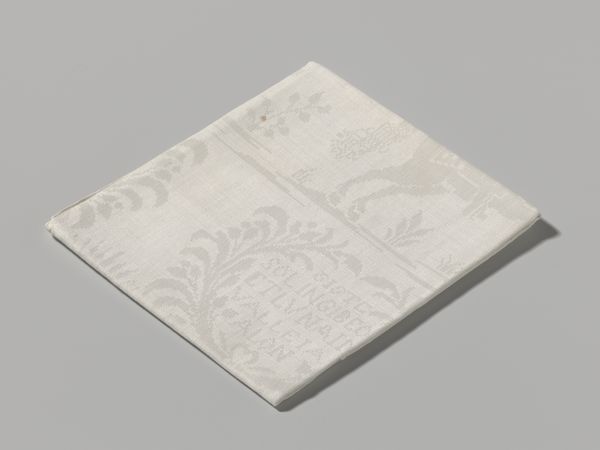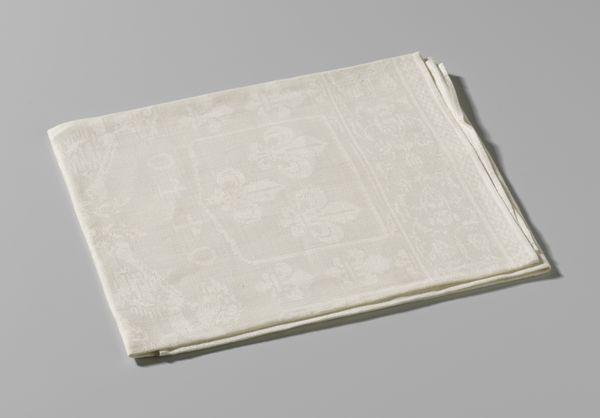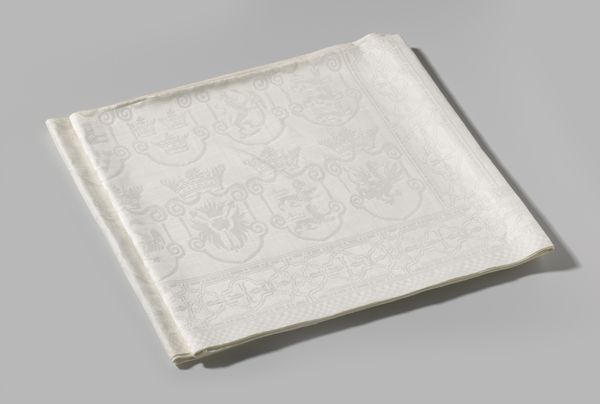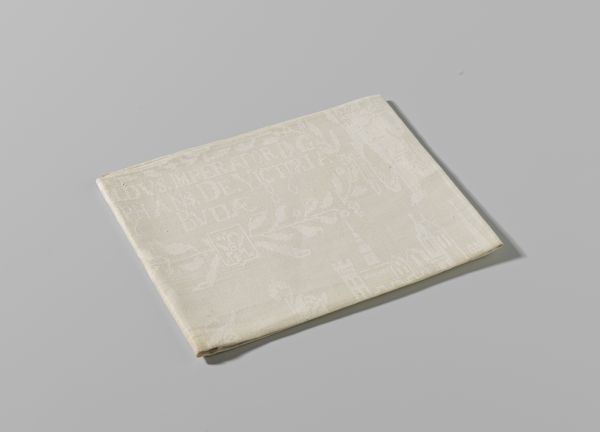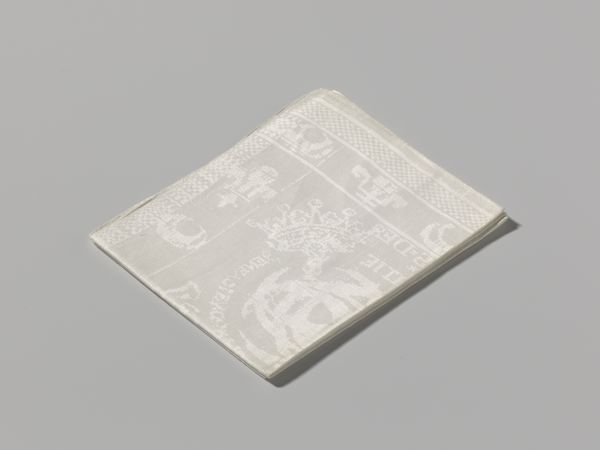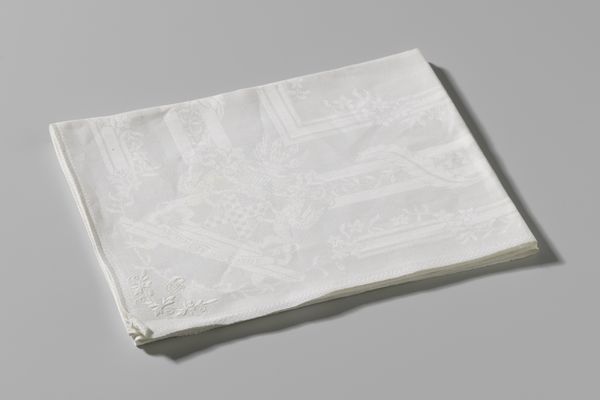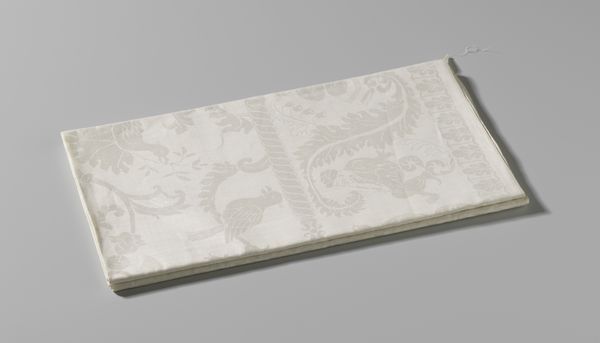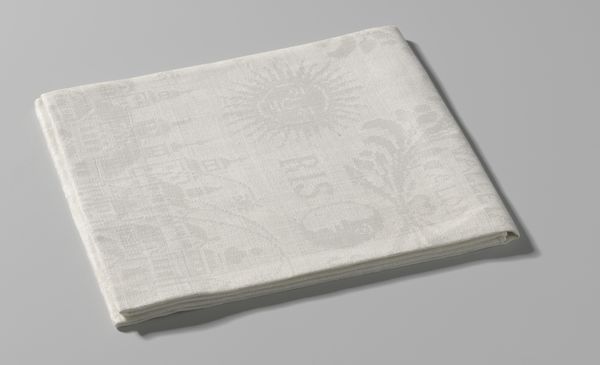
textile
#
textile
#
decorative-art
Dimensions: length 115.0 cm, width 85.0 cm
Copyright: Rijks Museum: Open Domain
Curator: Here we have a linen napkin, made around 1870, bearing the Van der Dussen family crest. Editor: It's incredibly subtle, almost ghostly. The whiteness on white gives it this ethereal, pristine quality. Very formal, reserved. Curator: Yes, the restraint is interesting. Think about the Jacquard loom, though. By the mid-19th century, it allowed for intricate, almost automated weaving. This napkin, seemingly simple, embodies a whole new scale of industrial production and accessible luxury. Editor: Accessible is relative, though. Note the symmetry, the repeated motifs. The artist firm, J. Maas, has very deliberately woven linear sections that almost create frames on the fabric to display the family crest in an ornate fashion. Curator: Absolutely. It speaks volumes about the rising merchant class, and their need to assert their social standing. Linen production was often deeply enmeshed with colonial trade routes, wasn’t it? A deceptively domestic object tied to broader global labor practices. Editor: Precisely, it's that very paradox that makes it compelling from a formal perspective: the clean geometry intertwined with botanical details. It is a cultural expression and has this silent but distinct presence of something precious to this family. Curator: Yes, you have the material means reflecting on their cultural aspirations and social hierarchies. Editor: A tight marriage of domestic utility and aristocratic symbolism, presented within rigid boundaries, aesthetically beautiful and socially charged. I now know I need more than one napkin! Curator: And I see this simple piece differently by thinking about these means of making and social meanings surrounding decorative art.
Comments
No comments
Be the first to comment and join the conversation on the ultimate creative platform.
